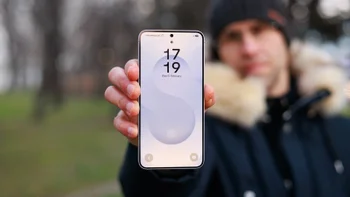The OnePlus 5 dual camera explained, or why two cameras are better than one

Dual camera: what does it mean?

| OnePlus 5 camera specs | |||
| Primary camera | Telephoto camera | Front camera | |
| Resolution, pixel size | 16MP, 1.12um | 20MP, 1.0um | 16MP, 1.0um |
| Image sensor | Sony IMX 398 | Sony IMX 350 | Sony IMX 371 |
| Aperture | f/1.7 | f/2.6 | f/2.0 |
| Image stabilization | Electronic | N/A | Electronic |
| Flash | Dual LED flash | Dual LED flash | Display flash |
| Video recording | 4K @ 30fps 1080p @ 60fps 720p slo-mo @ 120fps | 4K @ 30fps 1080p @ 60fps 720p slo-mo @ 120fps | 1080p @ 30fps |
The OnePlus 5 dual camera: pros and cons

UPDATE: It has been revealed that the secondary camera on the OnePlus 5 does not deliver 2X optical zoom, as initially thought. The secondary camera provides 1.6X zoom which is combined with software processing to achieve what OnePlus calls "lossless" zoom.
source: Carl Pei (Twiiter)
Speaking of similarities with the iPhone 7 Plus, the OnePlus 5 has a dedicated Portrait mode, just like Apple's handset. It uses the zoom camera of the phone and applies a background blur to the image, thus highlighting the person that you're taking a photo of.
But the telephoto camera on the OnePlus 5 is not without its drawbacks. For starters, it has a much narrower aperture, meaning that its optical system lets in less light compared to the main camera. And its image sensor uses smaller pixels, which tend to be more susceptible to digital noise. Therefore, it is very likely to be unusable in low-light situations, be it for snapping portraits or for zooming in.
OnePlus 5 vs OnePlus 3T cameras: what else has changed?
While the secondary zoom camera is a great addition to the OnePlus 5 camera setup, the main cam has been treated to several welcome upgrades. One of them comes in the form of a wider aperture of F1.7 vs F2.0 for the 3T. The result we're expecting: clearer photos with less noise and less motion blur.
Moreover, the IMX398 image sensor uses what OnePlus calls Fast AF technology, which is a kind of phase-detection autofocus. This should enable the OnePlus 5 to focus up to 40% faster than the 3T, all while being more accurate at it.
One alarming omission, however, is the lack of optical image stabilization on the OnePlus 5, presumably dropped in order to fit the dual-camera module in a phone that's just 7.25 millimeters thin. For those not familiar, OIS is meant to help in low-light situations by keeping the frame steady, thus reducing motion blur. It is also commonly used to reduce shakiness in videos. In its place, OnePlus is adding electronic image stabilization, the performance of which remains to be tested.
The OnePlus 5 camera app: what's new on the software side?

The built-in HDR mode has also been improved, OnePlus noted while introducing its latest phone. This should let you take clearer photos of subjects situated behind bright light sources.
Like previous OnePlus phones, the OnePlus 5 also includes manual controls for experienced photographers to play with. As shown on the right, settings like white balance, focus, shutter speed, and ISO can be controlled independently to achieve a desired look or effect, depending on the situation. For the OnePlus 5, OnePlus is also adding a histogram, as well as a gyroscope-guided level to help you keep those horizons straight.
Videos: 4K resolution, better sound quality
The OnePlus 5 shoots video at up to 4K resolution, just like any high-end smartphone nowadays. Despite the lack of optical image stabilization, videos should have at least some stability to them, as the frame is stabilized by the camera software. We have no video samples to share yet, but our expectations are set high. Phones like the iPhone and the Google Pixel have already proven that digital video stabilization is certainly capable of delivering great results.
Sound quality in videos is getting a boost with the addition of higher-grade microphones. These are capable of capturing even louder sound, such as what you'd have at a concert, without crackling distortion.
That's pretty much all for now, folks, but we should be able to share first-hand impressions of the OnePlus 5 camera in the coming days. Until then, here's a set of photo samples published by OnePlus.
Follow us on Google News












Things that are NOT allowed:
To help keep our community safe and free from spam, we apply temporary limits to newly created accounts: